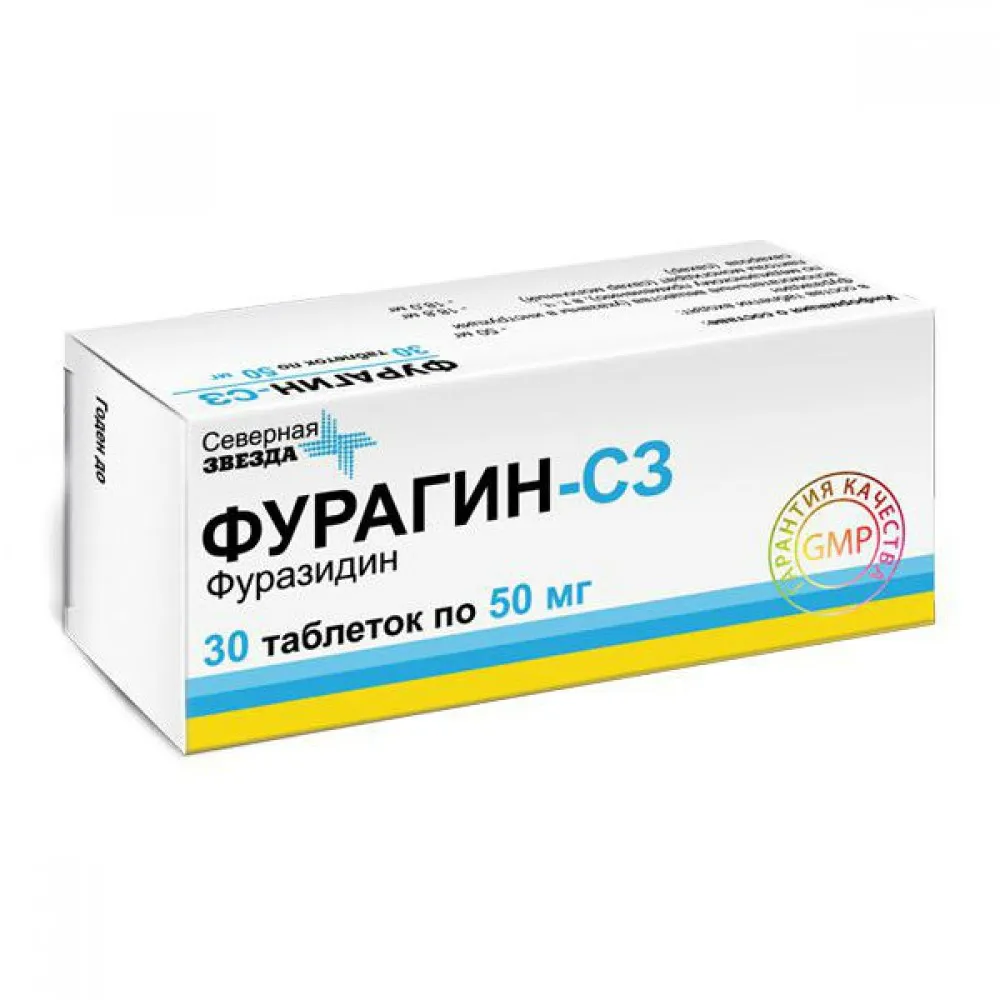Description
Furagyn Tablets 50 mg. №30
Ingredients:
Each tablet contains 50 mg of Furazidin.
Mechanism of Action:
Furazidin, the active ingredient in Furagyn tablets, exerts its therapeutic effects by disrupting the bacterial cell wall synthesis, leading to bacterial cell death. This mechanism inhibits the growth and spread of susceptible bacteria responsible for urinary tract infections.
Pharmacological Properties:
Furazidin demonstrates bactericidal activity against a range of gram-negative and gram-positive bacteria commonly implicated in urinary tract infections. It is absorbed well after oral administration, reaching peak plasma concentrations within a few hours. The drug is primarily excreted through the kidneys, making it an effective choice for urinary tract infections.
Indications for Use:
Furagyn tablets are indicated for the treatment of urinary tract infections caused by susceptible strains of bacteria. These infections may include cystitis, pyelonephritis, and other lower and upper urinary tract infections.
Contraindications:
Do not use Furagyn tablets if you have a known allergy to furazidin or any components of the formulation. Additionally, individuals with severe renal impairment should avoid the use of this medication due to the risk of potential adverse effects on kidney function.
Side Effects:
Common side effects associated with Furagyn tablets may include gastrointestinal disturbances such as nausea, vomiting, or diarrhea. Allergic reactions like rash, itching, or swelling are possible but rare. In some cases, prolonged use may lead to the development of drug-resistant bacteria.
Usage Instructions:
The recommended dosage of Furagyn tablets is one 50 mg tablet taken three times a day. It is essential to take the medication with a full glass of water to ensure proper absorption. Complete the full prescribed course even if symptoms improve to prevent recurrence of the infection.
Benefits Compared to Analogues:
Furagyn tablets offer the advantage of a targeted approach to treating urinary tract infections with a well-established safety profile. The drug’s bactericidal action against a broad spectrum of uropathogens makes it an effective choice for uncomplicated infections, reducing the risk of resistance development.
Suitable Patient Groups:
Furagyn tablets are suitable for use in adults, including the elderly population, for the treatment of urinary tract infections. However, caution is advised in patients with renal impairment, and dosage adjustments may be necessary based on individual kidney function.
Storage and Shelf Life:
Store Furagyn tablets in a cool, dry place away from direct sunlight to maintain their stability and efficacy. Ensure the product is kept out of reach of children to prevent accidental ingestion. Check the expiration date on the packaging and do not use the tablets beyond the stated shelf life.
Packaging Description:
Furagyn tablets are supplied in a package containing 30 tablets, each with a dosage strength of 50 mg. The packaging is designed to protect the tablets from environmental factors and ensure their integrity until the time of use.
Clinical Evidence and Proven Effectiveness:
Furazidin, the key component of Furagyn tablets, has been extensively studied for its efficacy in treating urinary tract infections. Clinical studies have shown that furazidin exhibits potent antibacterial activity against common uropathogens, making it a valuable option for empirical therapy. Furthermore, meta-analyses have confirmed the safety and effectiveness of furazidin in managing uncomplicated urinary tract infections.





